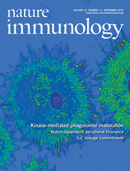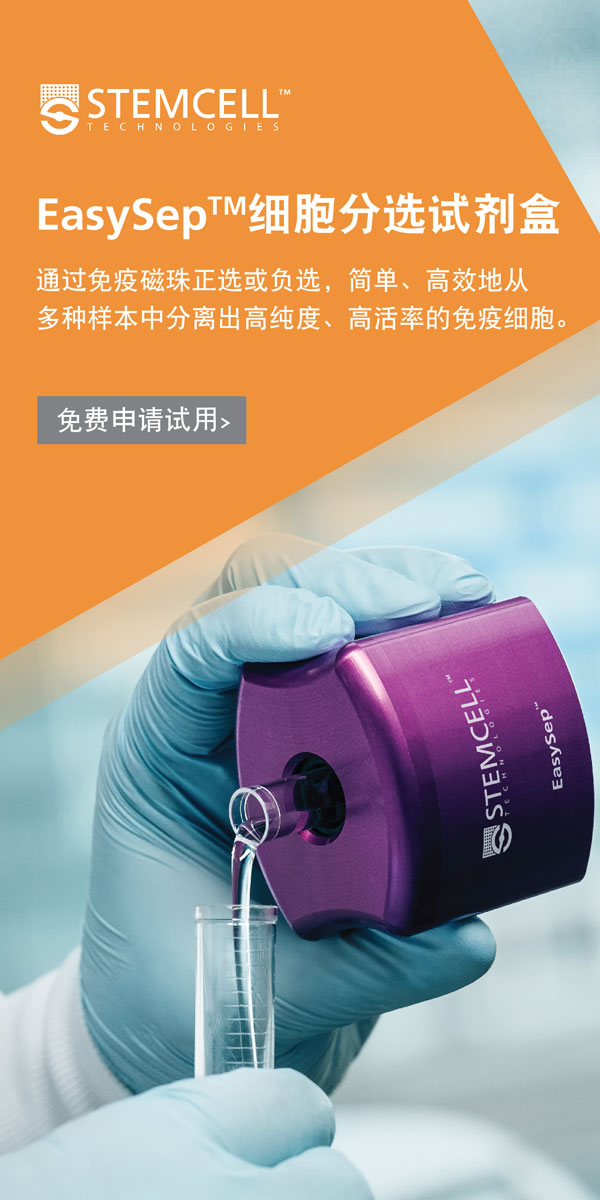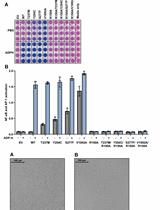- EN - English
- CN - 中文
PKC-θ in vitro Kinase Activity Assay
PKC-θ激酶体外活性试验
发布: 2016年10月20日第6卷第20期 DOI: 10.21769/BioProtoc.1980 浏览次数: 10245
评审: Ivan ZanoniMichael EnosMareta Ruseva
Abstract
Protein kinase C-θ (PKC-θ), a member of the Ca2+-independent PKC subfamily of kinases, serves as a regulator of T cell activation by mediating the T cell antigen receptor (TCR)- and coreceptor CD28-induced activation of the transcription factors NF-κB and AP-1 and, to a lesser extent, NFAT, and, subsequently, interleukin 2 (IL-2) production and T cell proliferation. In T cells, TCR and CD28 stimulation-induced activation of PKC-θ is the integrated result of diacylglycerol-mediated membrane recruitment, GLK-mediated phosphorylation at activation loop, CD28, Lck, and sumoylation-mediated central immunological synapse localization (Wang et al., 2015; Monks et al., 1997; Kong et al., 2011; Isakov and Altman, 2012; Chuang et al., 2011). Phosphatidylserine (PtdSer) and the phorbol ester Phorbol 12-myristate 13-acetate (PMA, a surrogate of diacylglycerol [DAG]) are the cofactors for the Ca2+-independent PKC subfamily that bind to PKC directly and activate it by changing its conformation (Nishizuka, 1995). A protocol to analyze the PKC-θ kinase activity in vitro is described here. Myelin basic protein is used as the substrate and its phosphorylation is detected by the incorporation of radioactive phosphate into the substrate, which is analyzed by a laser scanner.
Keywords: In vitro kinase assay (体外激酶测定)Background
Specified by their divergent regulatory domains, the PKC family can be divided into distinct subgroups: the conventional PKCs (cPKCs, comprising PKC-α, β and γ), the novel PKCs (nPKCs, including PKC-δ, ε, θ and η) and the atypical PKCs (aPKCs, PKCι and ζ). The cPKCs are activated by a combination of diacylglycerol, phospholipid and Ca2+. The nPKCs are activated by diacylglycerol and phorbol esters but do not require Ca2+. In contrast, the aPKCs do not depend on Ca2+ or diacylglycerol for activation (Rosse et al., 2010). Here we used anti-Myc or anti-PKC-θ to isolate PKC-θ from the cell lysates, then performed the radiolabeled ATP based kinase assay in the Reaction buffer containing PMA, PtdSer and EGTA (a selective chelator for Ca2+). The assay protocol described here is quick, sensitive and specific, provides a direct measurement of PKC-θ activity. This protocol could be modified to analyze the activity of other nPKC isoforms.
Materials and Reagents
- Jurkat E6.1 cells or HEK293T cells
- Phosphate-buffered saline (PBS) (Thermo Fisher Scientific, GibcoTM, catalog number: 10010023 )
- RPMI-1640 medium (GE Healthcare, HyCloneTM, catalog number: SH30027.01 )
- Heat-inactivated fetal bovine serum (FBS) (Thermo Fisher Scientific, GibcoTM, catalog number: 10270-106 )
- Anti-PKC-θ (Santa Cruz Biotechnology, catalog number: sc-1875 )
- Anti-Myc (9E10) (Santa Cruz Biotechnology, catalog number: sc-40 )
- Protein G sepharose (GE Healthcare, catalog number: 17-0618-01 )
- Phosphatidylserine from PepTag® Non-Radioactive PKC assay kit (Promega, catalog number: V5330 )
- Tris (Sangon Biotech, catalog number: A600194 )
- Sodium chloride (NaCl) (Sigma-Aldrich, catalog number: S3014 )
- Ethylenediaminetetraacetate (EDTA) (Sangon Biotech, catalog number: A610185 )
- Nonidet P40 (Sangon Biotech, catalog number: A600385 )
- Aprotinin (EMD Millipore, catalog number: 616370 )
- Leupeptin (Calbiochem, catalog number: 108976 )
- Phenylmethanesulfonyl fluoride (PMSF) (Sigma-Aldrich, catalog number: P7626 )
- Sodium pyrophosphate tetrabasic decahydrate (NaPPi) (Sigma-Aldrich, catalog number: S6422 )
- Sodium orthovanadate (Na3VO4) (Sigma-Aldrich, catalog number: 567540 )
- HEPES (Thermo Fisher Scientific, GibcoTM, catalog number: 11344041 )
- Magnesium chloride (MgCl2) (Sigma-Aldrich, catalog number: M4880 )
- EGTA (Sigma-Aldrich, catalog number: E3889 )
- ATP (Sigma-Aldrich, catalog number: A2383 )
- [γ-32P]ATP (PerkinElmer, catalog number: NEG002Z001MC )
- Myelin basic protein (MBP) (Sigma-Aldrich, catalog number: M1891 )
- PMA (Sigma-Aldrich, catalog number: P1585 )
- Bromophenol blue (Bio-Rad Laboratories, catalog number: 1610404 )
- DL-dithiothreitol (DTT) (Sigma-Aldrich, catalog number: D9779 )
- Sodium dodecyl sulfate (SDS) (Sigma-Aldrich, catalog number: L3771 )
- Glycerol (Sangon Biotech, catalog number: A100854 )
- ATP-competitive PKC-θ inhibitor rottlerin (EMD Millipore, catalog number: 557370 )
- DMSO
- Lysis buffer (see Recipes)
- PKC-θ kinase buffer (see Recipes)
- Reaction buffer (see Recipes)
- 5x SDS-PAGE loading buffer (see Recipes)
Equipment
- Typhoon Trio+ system (GE Healthcare)
- Humidified CO2 incubator
- Laminar air flow bio-safety cabinet
- Centrifuge (Eppendorf, model: 5417R )
- Phosphor-storage screen (GE Healthcare)
- Sonicator (Sonics, model: VCX-130 )
- Thermomixer (Eppendorf)
- Exposure cassettes (GE Healthcare)
Software
- Typhoon Scanner Control software
Procedure
文章信息
版权信息
© 2016 The Authors; exclusive licensee Bio-protocol LLC.
如何引用
Wang, X. and Li, Y. (2016). PKC-θ in vitro Kinase Activity Assay. Bio-protocol 6(20): e1980. DOI: 10.21769/BioProtoc.1980.
分类
免疫学 > 免疫细胞功能 > 抗原特异反应
生物化学 > 蛋白质 > 活性
您对这篇实验方法有问题吗?
在此处发布您的问题,我们将邀请本文作者来回答。同时,我们会将您的问题发布到Bio-protocol Exchange,以便寻求社区成员的帮助。
Share
Bluesky
X
Copy link















